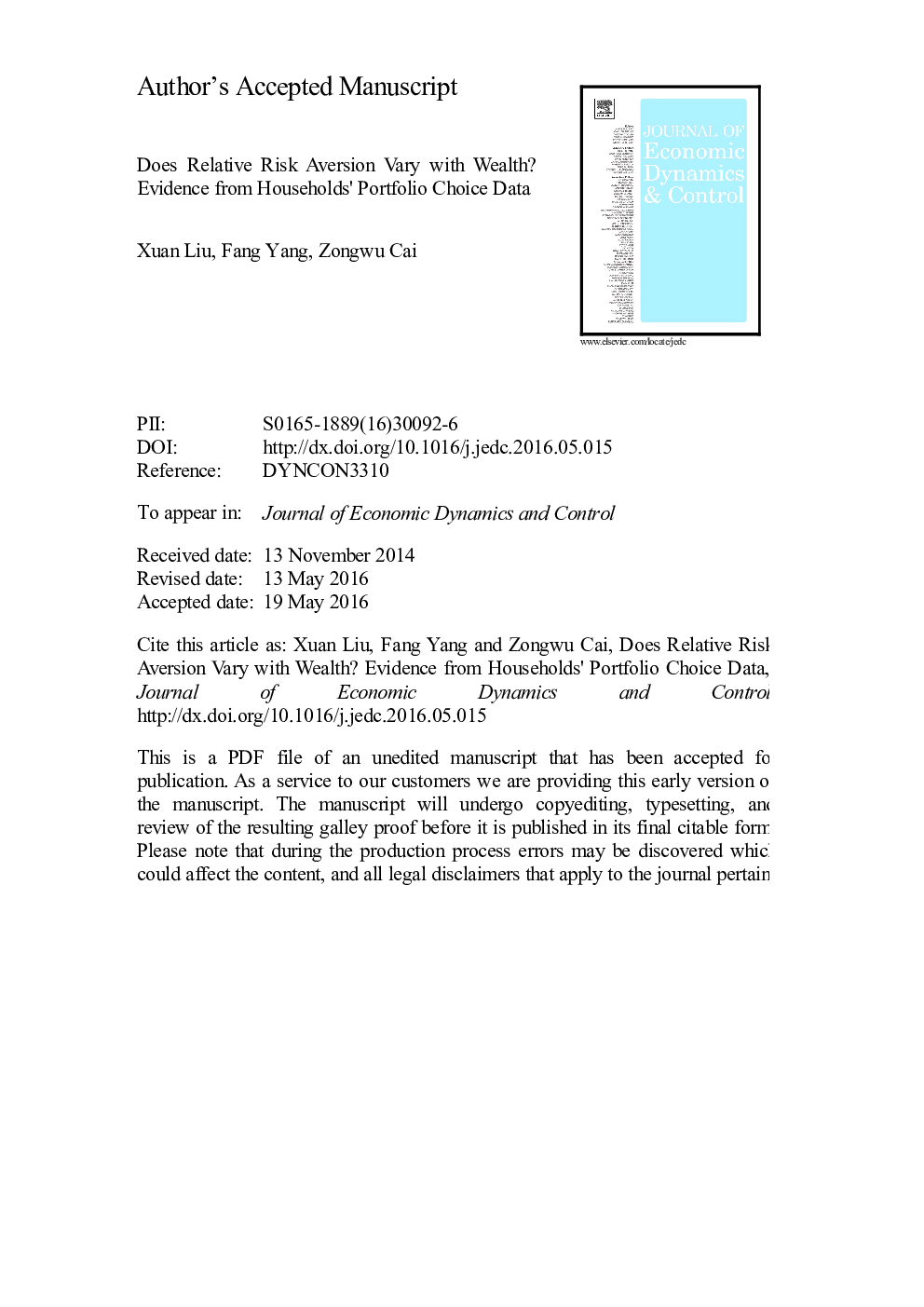| Article ID | Journal | Published Year | Pages | File Type |
|---|---|---|---|---|
| 5098149 | Journal of Economic Dynamics and Control | 2016 | 44 Pages |
Abstract
We test whether relative risk aversion varies with wealth using the Panel Study of Income Dynamics data in the U.S. Our analytical results indicate the following implications. For each household, there are two channels through which the risky share responds to wealth fluctuations, the income channel and the habit channel. Across households, there are heterogeneous responses through both the habit channel and the income channel. Finally, two potential misspecification problems on time-varying relative risk aversion arise when both heterogeneous responses through the habit channel and the responses through the income channel are ignored. Our main empirical findings are to show the importance of the income channel and the heterogeneous responses, and to provide strong evidence of relative risk aversion varying with wealth, after correcting two misspecification problems.
Related Topics
Physical Sciences and Engineering
Mathematics
Control and Optimization
Authors
Xuan Liu, Fang Yang, Zongwu Cai,
